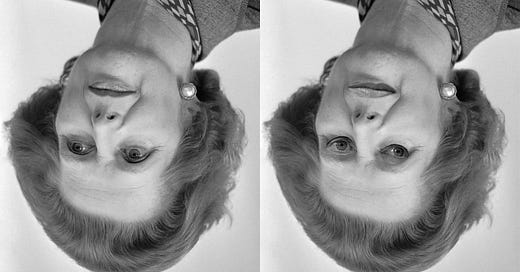The Thatcher Effect: A Fascinating Glitch in Human Perception
Why an upside-down face looks normal—even when it’s horribly distorted
By Photography: Rob BogaertsImage manipulation: Phonebox - This file was derived from: Margaret Thatcher (1983).jpg, CC0, https://commons.wikimedia.org/w/index.php?curid=79649613
Have you ever looked at an upside-down face and failed to notice something was horribly wrong—only to flip it upright and suddenly see a grotesque distortion? If so, you’ve encountered the Thatcher Effect, a psychological illusion that reveals the inner workings of human face perception.
What Is the Thatcher Effect?
The Thatcher Effect—sometimes called the Thatcher Illusion—was first demonstrated by psychologist Peter Thompson in 1980. It gets its name from the face of former British Prime Minister Margaret Thatcher, which was used in the original experiment. Thompson altered an image of Thatcher by inverting her eyes and mouth but left the rest of her face untouched. When viewed right-side up, the manipulations were glaringly unnatural. However, the alterations became far less noticeable when the same distorted face was turned upside-down.
This effect highlights how our brains process faces in a unique and holistic way, focusing on overall structure rather than isolated features. But when a face is flipped upside-down, our facial recognition abilities become disrupted, making us less sensitive to local changes in facial features.
Why Does It Happen?
The Thatcher Effect is linked to the way our brain specializes in face perception. Neuroscientists believe that recognizing faces is a configural process, meaning we don’t just see a collection of eyes, noses, and mouths—we see a whole face. This holistic processing helps us quickly identify people and interpret facial expressions.
However, when a face is inverted, our ability to process it holistically weakens. Instead of perceiving a face as a structured whole, we start to see it as a collection of individual features, and we struggle to detect distortions that would otherwise stand out immediately.
The Science Behind It
Research suggests that a specific area of the brain, the fusiform face area (FFA), plays a crucial role in face recognition. This region is highly sensitive to upright faces but struggles with inverted ones, leading to impaired perception of altered features.
Studies using brain imaging have confirmed that holistic face processing breaks down when a face is flipped. This explains why we can easily recognize an upside-down car or house but struggle with upside-down faces.
Implications and Applications
The Thatcher Effect isn’t just a neat party trick—it has important implications in psychology, neuroscience, and even artificial intelligence.
Facial Recognition Technology: Understanding how humans perceive faces helps improve AI-based facial recognition systems, ensuring simple distortions don’t trick them.
Cognitive Neuroscience: The effect sheds light on brain functions related to facial recognition, aiding in research on disorders like prosopagnosia (face blindness).
Forensic Science: Law enforcement and forensic experts use insights from face perception studies to improve eyewitness testimony and facial composite software.
Try It Yourself!
Want to experience the Thatcher Effect firsthand? Find a photo of a person and use an image editing tool to rotate their eyes and mouth upside-down. Now flip the entire image upside-down. You’ll likely see an almost normal face. But the moment you turn it right-side up, the bizarre distortions will jump out at you!
Final Thoughts
The Thatcher Effect is a powerful reminder that what we see isn’t always what it seems. It reveals the limitations of our perception, showing that even something as familiar as a human face can trick our brains when viewed from the wrong perspective. So next time you see an upside-down portrait, take a closer look—you might just uncover a hidden illusion lurking within.
As always, feel free to reach out with any questions or comments. Happy musing!




